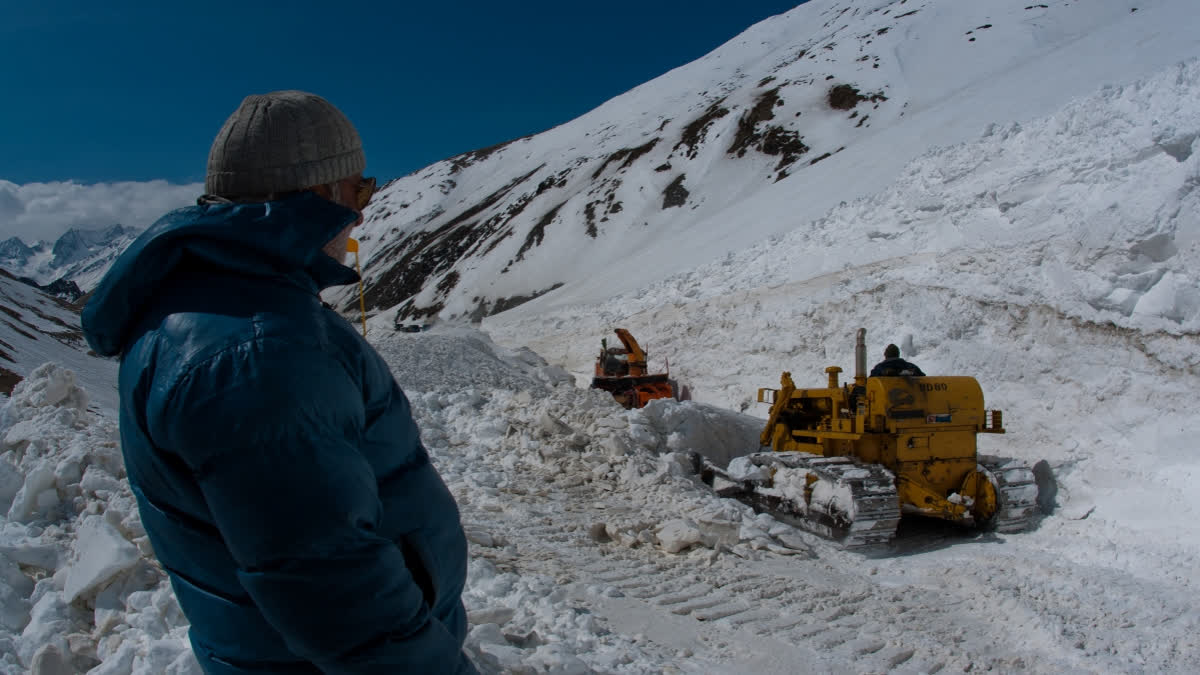Hyderabad: The Border Roads Organisation (BRO) was formed on May 7, 1960, with the primary goal of developing infrastructure in remote areas of India's north and northeastern states.
BRO will be celebrating its 65th Raising Day on May 07, 2024, at all its detachments across the country. Project Dantak has been instrumental in developing infrastructure and providing connectivity in remote areas of Bhutan.
Significance of Border Roads Organisation
The biggest assistance provided by BRO is to the defence sector of the country. It has diversified into a large spectrum of construction and development works comprising airfields, building projects, defence works and tunnelling and has endeared itself to the people. BRO performs two separate functions during the time of peace and during the war.
Significance of BRO during Peace
- Contribute to the socioeconomic development of border states
- Developing the infrastructure of operational roads for the staff
Significance of BRO during War
- Maintaining and developing the roads through the Line of Control and performing any other specific task assigned by the Government
- Apart from the above-mentioned situation, BRO’s contribution to the safety and growth of developing border regions of the north and northeast also plays a key role
Not just in India, but in our friendly neighbouring countries as well, BRO has had a part to play in the infrastructural development. One of these includes the Delaram-Zaranj Highway in Afghanistan, which was constructed in 2008. Apart from this, in case of a calamity or natural disaster, the work to undertake reconstruction can also be handed over to the BRO.
History and Milestones:
Project Dantak was primarily tasked with constructing motorable roads in Bhutan. In 1968, it completed the road connecting Samdrup Jongkhar to Trashigang, and in the same year, Thimphu was connected to Phuentsholing by Dantak. These pioneering projects were essential in connecting the remote areas of Bhutan to the rest of the world, promoting trade and commerce, and improving the living standards of people living in the region. Since then, Project Dantak has undertaken several other notable projects, including the construction of Paro Airport, Yonphula Airfield, Thimphu – Trashigang Highway, telecommunication and hydropower infrastructure, Sherubtse College, Kanglung, and India House Estate. These projects have significantly contributed to the growth and development of Bhutan.
Recruitment and Employment:
Project Dantak recruits local workers from Bhutan and Indian workers from adjoining districts along the India-Bhutan border. This approach has not only helped to provide employment opportunities for the local population but has also helped to build a strong bond between India and Bhutan.
Key Highlights
- Raised in 1960 by Pandit Jawaharlal Nehru for coordinating the speedy development of a network of roads in the North and the North Eastern border regions of the country
- It works under the administrative control of the Ministry of Defence
- It has diversified into a large spectrum of construction and development works comprising airfields, building projects, defence works and tunnelling and has endeared itself to the people
- It is a leading road construction agency under the Ministry of Defence
- Its primary role is to provide road connectivity in India's border areas. It also creates up-grades and maintains infrastructure along borders to meet India’s overall tactical and strategic goals
- Apart from road construction it also executes maintenance works along Northern and Western frontiers mainly to meet the strategic requirements of the Indian Army. It is responsible for over 53,000 km of roads
- Its work involves Formation Cutting, Surfacing, Bridge Construction and Resurfacing
- It contributes towards India's strategic objectives in neighbouring regions by constructing roads in friendly foreign nations like Afghanistan, Bhutan, Myanmar, Sri Lanka and Nepal
- Disaster management: It has played an important role in reconstruction work after the Tsunami in Tamil Nadu in 2004, the Kashmir earthquake in 2005, and the Ladakh flash floods in 2010 etc.
- 2,445 kms of roads were constructed in all of India's border states/Union Territories with 507 km — the largest chunk — in Arunachal Pradesh. This was followed by 453 km in Ladakh and 443 km in Jammu & Kashmir. The rest were constructed in nine states — Uttarakhand, Mizoram, Nagaland, Manipur, Sikkim, West Bengal, Himachal Pradesh, Rajasthan, and Punjab — and in the Union Territory of Andaman & Nicobar.
Mission of Border Roads Organisation
- To ensure that the cost-effective, sustainable, and strategic needs of the armed forces are met without any inconvenience
- Achieving an international level of quality excellence and time consciousness
- Present their expertise in any project of national or transnational development
- Using information technology in the best possible manner and implementing it as an advantage in the various infrastructure projects
- The highest level of proficiency must be shown with every construction
- To upgrade the quality of life and livelihood in border areas by helping them with the means of easy transport, accessibility and connectivity



